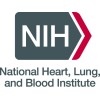Seasonal Variation of Blood Cholesterol Levels
Primary Purpose
Atherosclerosis, Cardiovascular Diseases, Heart Diseases
Status
Completed
Phase
Locations
Study Type
Observational
Intervention
Sponsored by

About this trial
This is an observational trial for Atherosclerosis
Eligibility Criteria
No eligibility criteria
Sites / Locations
Outcomes
Primary Outcome Measures
Secondary Outcome Measures
Full Information
NCT ID
NCT00005385
First Posted
May 25, 2000
Last Updated
February 17, 2016
Sponsor
National Heart, Lung, and Blood Institute (NHLBI)
1. Study Identification
Unique Protocol Identification Number
NCT00005385
Brief Title
Seasonal Variation of Blood Cholesterol Levels
Study Type
Observational
2. Study Status
Record Verification Date
October 2005
Overall Recruitment Status
Completed
Study Start Date
September 1994 (undefined)
Primary Completion Date
undefined (undefined)
Study Completion Date
July 1999 (Actual)
3. Sponsor/Collaborators
Name of the Sponsor
National Heart, Lung, and Blood Institute (NHLBI)
4. Oversight
5. Study Description
Brief Summary
To describe and delineate in a prospective study the nature and causes of seasonal variation of blood lipid levels in the general population.
Detailed Description
BACKGROUND:
Significant seasonal variation of blood cholesterol levels has been shown in a number of cross-sectional studies, with important implications for national screening and therapeutic guidelines. However, the phenomenon has not been well studied: little is known about etiology or about seasonal variation of lipid subfractions.
DESIGN NARRATIVE:
The investigators assessed the magnitude and timing of the seasonal effect for total cholesterol and the important lipoprotein subfractions (low-density lipoprotein, high-density lipoprotein, triglycerides, apolipoproteins AI and B, and lipoprotein (a)) in both sexes and at different ages. They also identified and quantified the effects of the main factors determining the variation and assessed the seasonal variation of other blood elements thought to play a role in the development of coronary heart disease, including hemostatic factors and antioxidants Finally, they explored the implications of the phenomenon for public health policy.
Baseline and serial measures were repeated quarterly for one year. These included measures of: serum lipids and lipoproteins; antioxidant vitamins; platelets and hemostatic factors; demographic factors; weight, waist-hip ratio, height, body mass index (BMI) and blood pressure; dietary intake; physical activity; light exposure; and psychologic factors. Meteorologic data were also collected. Data were collected by written questionnaire and by the use of computer-assisted evening telephone interviews (CATI), which were used for the collection of dietary, physical activity and individual light-exposure and other lifestyle data. Activity and light data were verified in a subset of 80 patients by the use of a monitoring device. Analyses included methods to describe the seasonal variation in dietary, physical activity, psychologic, and light exposure data and repeated measures in linear regression models to determine the roles of specific dietary, physical activity, psychologic, and light-exposure related covariates in explaining variability in blood lipids, antioxidant vitamins, and hemostatic factors.
The study completion date listed in this record was obtained from the "End Date" entered in the Protocol Registration and Results System (PRS) record.
6. Conditions and Keywords
Primary Disease or Condition Being Studied in the Trial, or the Focus of the Study
Atherosclerosis, Cardiovascular Diseases, Heart Diseases, Coronary Disease
7. Study Design
10. Eligibility
Sex
Male
Maximum Age & Unit of Time
100 Years
Accepts Healthy Volunteers
No
Eligibility Criteria
No eligibility criteria
Overall Study Officials:
First Name & Middle Initial & Last Name & Degree
Ira Ockene
Organizational Affiliation
University of Massachusetts, Worcester
12. IPD Sharing Statement
Citations:
PubMed Identifier
10795789
Citation
Matthews CE, Freedson PS, Hebert JR, Stanek EJ 3rd, Merriam PA, Ockene IS. Comparing physical activity assessment methods in the Seasonal Variation of Blood Cholesterol Study. Med Sci Sports Exerc. 2000 May;32(5):976-84. doi: 10.1097/00005768-200005000-00015.
Results Reference
background
PubMed Identifier
10523752
Citation
Stanek EJ 3rd, Well A, Ockene I. Why not routinely use best linear unbiased predictors (BLUPs) as estimates of cholesterol, per cent fat from kcal and physical activity? Stat Med. 1999 Nov 15;18(21):2943-59. doi: 10.1002/(sici)1097-0258(19991115)18:213.0.co;2-0.
Results Reference
background
PubMed Identifier
10447314
Citation
Merriam PA, Ockene IS, Hebert JR, Rosal MC, Matthews CE. Seasonal variation of blood cholesterol levels: study methodology. J Biol Rhythms. 1999 Aug;14(4):330-9. doi: 10.1177/074873099129000669.
Results Reference
background
PubMed Identifier
9291878
Citation
Hebert JR, Ockene IS, Hurley TG, Luippold R, Well AD, Harmatz MG. Development and testing of a seven-day dietary recall. Dietary Assessment Working Group of the Worcester Area Trial for Counseling in Hyperlipidemia (WATCH). J Clin Epidemiol. 1997 Aug;50(8):925-37. doi: 10.1016/s0895-4356(97)00098-x.
Results Reference
background
Learn more about this trial

Seasonal Variation of Blood Cholesterol Levels
We'll reach out to this number within 24 hrs